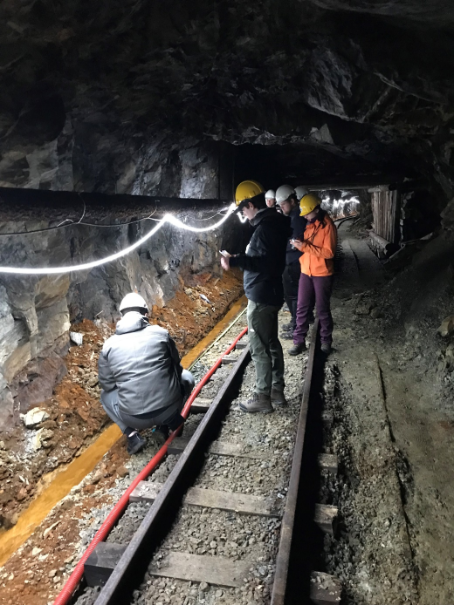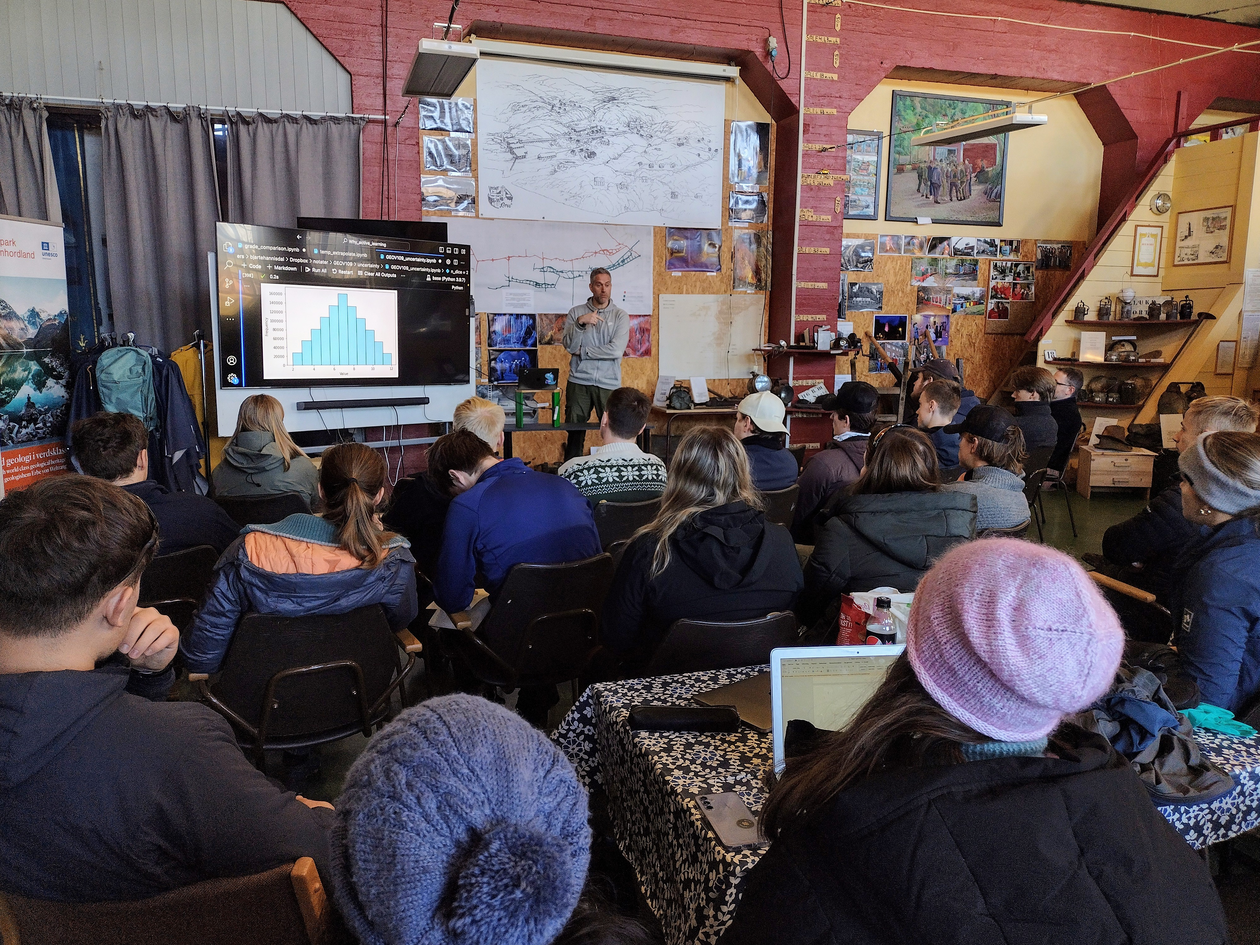Acid mine drainage at a black smoker analogue
Last week, four members of the Centre for Deep Sea Research led a field excursion for the GEOV-109 Introduction to Geochemistry course at a former pyrite mine in Sunnhordland Geopark.

Main content
Millions of years ago, sulfide deposits formed at Litlabø, Stord as a result of hydrothermal reactions below the seafloor (https://www.mdpi.com/2075-163X/14/4/384). From 1865, the iron sulfide in this deposit was mined, largely for the production of sulfuric acid. Mining operations finished there more than 50 years ago, but today the site remains a valuable location to teach students about geochemical reactions. As a result of the exposure of sulfide minerals to air, highly acidic and orange-colored streams run out of the mine adits, and mix further downstream with river waters. This produces a perfect natural laboratory for students to investigate the solubility of chemical elements, measure variations in pH as a result of mixing, as well as estimating fluxes of elements in this acid mine drainage setting.
As such, the teachers in GEOV-109, Eoghan Reeves, Bjarte Hannisdal, Steffen Jørgensen and Desiree Roerdink, took two groups of 30 students to Litlabø last week to perform their own research and learn about principles in geochemistry from their own discoveries. A field-lab was set-up in the sun outside with a pH meter and various test strips to measure concentrations of iron, copper, sulfate and carbonate, whereas others worked in the dark mine to measure fluxes using ping pong balls and rubber duckies. The data collected was used the following day by the students to asses the uncertainty on their measurements, and resample where they thought was needed.
Many thanks to the Litlabø Venelaget for Gruo for hosting us!


